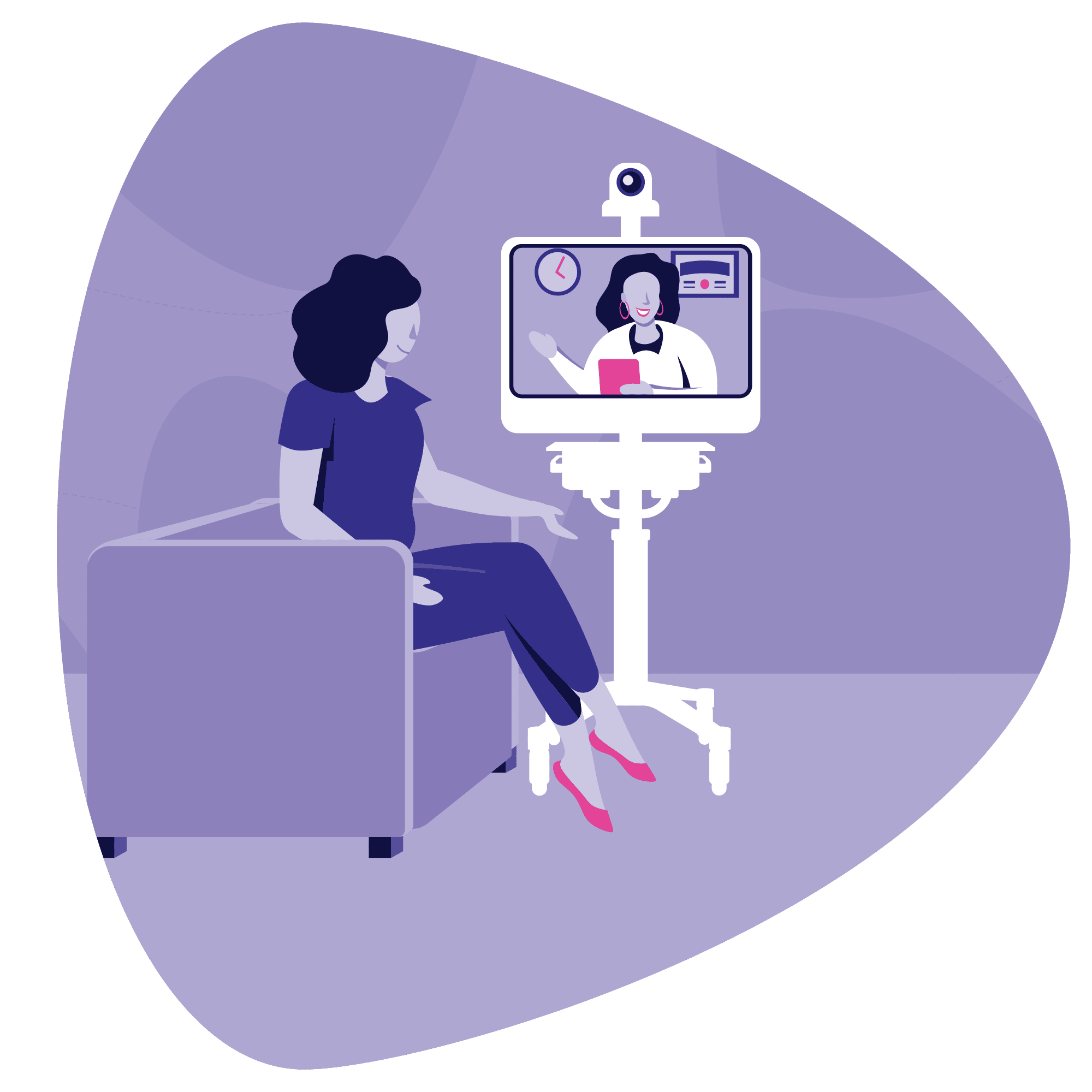Lack of access to proper psychiatric care in the United States is a major challenge for our healthcare system. However, virtual solutions make psychiatric care more accessible, effective, and patient-centered.
The benefits of virtual care for patients are significant. In fact, a study by the American Medical Association demonstrated 79% patient satisfaction with telehealth. For patients, virtual care opens up access to behavioral health services, facilitates shorter wait times, and cuts out the commute to the doctor’s office.
While these benefits are essential, let’s take a closer look at all the ways virtual care boosts patient satisfaction.
State of virtual behavioral health care
During the COVID-19 pandemic, many people found themselves relying on telehealth to get care. In fact, during the first four months of COVID-19, telehealth visits accounted for 23.6% of all interactions. Today, telehealth continues to provide care to those who cannot reach behavioral health services as easily.
Following the COVID-19 pandemic, many hospitals and health systems continue to experience challenges meeting patient volume and needs with limited behavioral health resources.
Additionally, the ongoing provider shortage underscores the importance of leveraging virtual care as patients still struggle to receive timely care. Thankfully, telepsychiatry can ensure patients receive quality, timely, and sustainable care by connecting them to providers regardless of geographic location.
Patient satisfaction by the numbers
Convenience is an essential factor that contributes to patient satisfaction. According to the American Medical Association, 62% of physicians feel like their patients have higher satisfaction since they’ve started offering virtual care as an option.
At Iris, our clinicians have a similar experience with patient satisfaction. Dr. Kavita Vasu, one of our psychiatrists, says virtual care gives her patients flexibility, allowing them to access care from wherever they are – whether at home or work. Dr. Vasu also notes that no-show rates are significantly lower.
Additionally, research shows that virtual care is an effective way to increase patient access. According to the 2022 CVS Health Care insights, 59% of patients said that accessing virtual telehealth services was essential to their health.
Overall, the data is clear – patient satisfaction with virtual care is high.
The J.D. Power 2022 U.S. Telehealth Satisfaction Study says that a growing number of patients prefer telehealth visits for various types of care, including routine care, prescription refills, and regular mental health visits. The survey also says 94% of patients and their families who have used telehealth in the past “definitely will” or “probably will” continue to utilize it.
Virtual care reaches those who need care most
In a database released by the Health Resources & Services Administration, numbers show that 157 million people live in a mental health professional shortage area (HPSA). Virtual care makes access to specialty behavioral health providers more easily available to those who live far from care.
Here are just a few of the populations that benefit from telepsychiatry access:
- LGBTQIA+: For LGBTQIA+ youth, access to mental health can be difficult due to inadequate mental health care, fear of discussing mental health concerns, and stigma. Utilizing virtual care can help LGBTQIA+ youth overcome some of these barriers by promoting a safe and accessible method for the delivery of care.
- Youth: Child psychiatry is more important than ever, with the American Academy of Pediatrics, the American Hospital Association, and the American Academy of Child Adolescent Psychiatry declaring a mental health emergency for youth in October 2021. With virtual care, children can be screened for mental health conditions, and have a psychiatrist ready to support and treat them. Additionally, parents no longer have to take time out of their day to bring their children to their mental health appointments, making care more convenient for both families and children.
- Geriatric populations: Early intervention, collaborative care, and a holistic approach are both vital when it comes to addressing the health of the geriatric population in your community. Virtual care can be an essential tool for older adults to receive care from the comfort of their own homes while maintaining a sense of autonomy.
- Rural populations: Barriers like limited health literacy, transportation challenges, and privacy are just a few challenges that rural populations face when they’re trying to get the care they need. However, virtual care provides an opportunity for rural communities to connect to a high-quality mental health provider without a long commute and fear of stigma.
- Underserved populations: Social determinants of health create and exacerbate mental illness by making access to mental health care more difficult. Access to providers that are culturally competent can allow minorities to connect with a provider who can better relate to their experiences.
How virtual care boosts patient satisfaction in the ED
In the emergency department (ED), virtual care can allow patients faster access to behavioral health care through a virtual visit. This improved access means patients don’t have to wait hours to receive treatment and can have a shorter stay in the ED – leading to an improved patient experience overall.
Avoiding ED boarding is crucial to patient satisfaction, as there are many downstream harms that can come with it. The Joint Commission (TJC) recently shared how boarding is a patient safety risk that leads to increased medical errors, compromised patient privacy, and increased mortality, especially if it exceeds four hours. With the help of virtual care, organizations can increase throughput in the ED and decrease the need for patient boarding.
How Iris can help
At Iris Telehealth, we envision a better world through healthy minds. If you’re looking to meet the behavioral needs of your community and help your patients achieve better health outcomes, telepsychiatry is the perfect solution. Contact us today if you’d like to learn more about implementing telepsychiatry into your organization.


